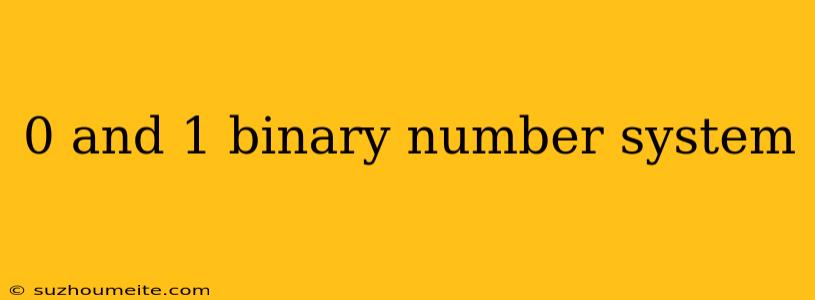The Power of 0 and 1: Understanding the Binary Number System
In the digital age, technology has become an integral part of our daily lives. From smartphones to computers, the internet to social media, we rely heavily on devices that process and store vast amounts of information. But have you ever wondered how these devices understand and process this information? The answer lies in the binary number system, a fundamental concept that uses only two digits: 0 and 1.
What is the Binary Number System?
The binary number system is a base-2 numeral system that represents information using only two digits: 0 and 1. This system is the basis for all computer programming and is used to represent information in computers, smartphones, and other digital devices. In contrast to the decimal system, which uses 10 digits from 0 to 9, the binary system uses only two digits to represent information.
How Does the Binary System Work?
The binary system works by representing information as a series of 0s and 1s, known as bits. Each bit can have one of two values: 0 or 1. These bits are combined to form bytes, which are groups of 8 bits that represent a single character or number.
Binary Numbers and their Decimal Equivalents
Here are some examples of binary numbers and their decimal equivalents:
- 101 (binary) = 5 (decimal)
- 1101 (binary) = 13 (decimal)
- 1111 (binary) = 15 (decimal)
Advantages of the Binary System
The binary system has several advantages that make it ideal for use in computers and other digital devices:
- Simpllicity: The binary system is simple and easy to understand, with only two digits to represent information.
- Efficiency: The binary system is efficient, requiring less power and resources to process and store information.
- Reliability: The binary system is reliable, with fewer errors and mistakes compared to other number systems.
Real-World Applications of the Binary System
The binary system has numerous real-world applications, including:
- Computer Programming: The binary system is used to write computer programs and software.
- Data Storage: The binary system is used to store data on hard drives, solid-state drives, and other digital storage devices.
- Networking: The binary system is used to transmit data over the internet and other networks.
Conclusion
In conclusion, the binary number system is a fundamental concept that underlies all digital technology. By understanding the binary system, we can appreciate the complexity and beauty of the digital world around us. From smartphones to computers, the internet to social media, the binary system plays a critical role in shaping our modern world.
